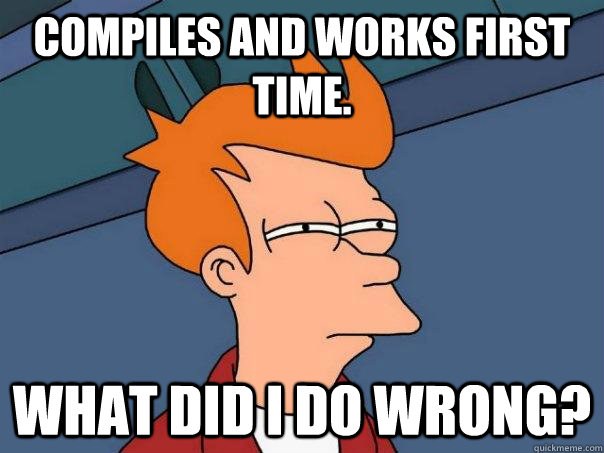Do we have a word or phrase to describe the following situation: You code up something complicated and it compiles and works on the first try. You then spend the next ten minutes trying to figure out what's actually broken because it shouldn't be this easy.
Friday, March 23, 2012
Wednesday, March 14, 2012
Alternate IPv4 Forms - URI Host Syntax Notes
By the URI RFC there is only one way to represent a particular IPv4 address in the host of a URI. This is the standard dotted decimal notation of four bytes in decimal with no leading zeroes delimited by periods. And no leading zeros are allowed which means there's only one textual representation of a particular IPv4 address.
However as discussed in the URI RFC, there are other forms of IPv4 addresses that although not officially allowed are generally accepted. Many implementations used inet_aton to parse the address from the URI which accepts more than just dotted decimal. Instead of dotted decimal, each dot delimited part can be in decimal, octal (if preceded by a '0') or hex (if preceded by '0x' or '0X'). And that's each section individually - they don't have to match. And there need not be 4 parts: there can be between 1 and 4 (inclusive). In case of less than 4, the last part in the string represents all of the left over bytes, not just one.
For example the following are all equivalent:
- 192.168.1.1
- Standard dotted decimal form
- 0300.0250.01.01
- Octal
- 0xC0.0XA8.0x1.0X1
- Hex
- 192.168.257
- Fewer parts
- 0300.0XA8.257
- All of the above
The bread and butter of URI related security issues is when one part of the system disagrees with another about the interpretation of the URI. So this non-standard, non-normal form syntax has been been a great source of security issues in the past. Its mostly well known now (CreateUri normalizes these non-normal forms to dotted decimal), but occasionally a good tool for bypassing naive URI blocking systems.
Friday, March 9, 2012
Privacy through Obscurity
With Facebook changing its privacy policy and settings so frequently and just generally the huge amount of social sites out there, for many of us it is far too late to ensure our name doesn't show up with unfortunate results in web searches. Information is too easily copyable and archive-able to make removing these results a viable option, so clearly the solution is to create more data.
Create fake profiles on Facebook using your name but with a different photo, different date of birth, and different hometown. Create enough doppelgangers to add noise to the search results for your name. And have them share embarrassing stories on their blogs. The goal is to ensure that the din of your alternates drowns out anything embarrassing showing up for you.
Although it will look suspicious if you're the only name on Google with such chaff. So clearly you must also do this for your friends and family. Really you'll be doing them a favor.
Friday, March 2, 2012
HTML5 Table Flipper Experiment
The goal of this experiment was to combine the flipping tables emoticons with the Threw It On The Ground video using shiny new HTML5-ish features and the end result is the table flipper flipping the Threw It On the Ground video.
The table flipper emoticon is CSS before content that changes on hover. Additionally on hover a CSS transform is applied to flip the video upside down several times and move it to the right and there's a CSS transition to animate the flipping. The only issue I ran into is that (at least on Windows) Flash doesn't like to have CSS transform rotations applied to it. So to get the most out of the flip experiment you must opt-in to HTML5 video on YouTube. And of course you must use a browser that supports the various things I just mentioned, like the latest Chrome (or not yet released IE10).
